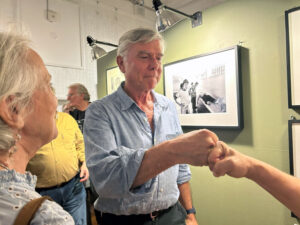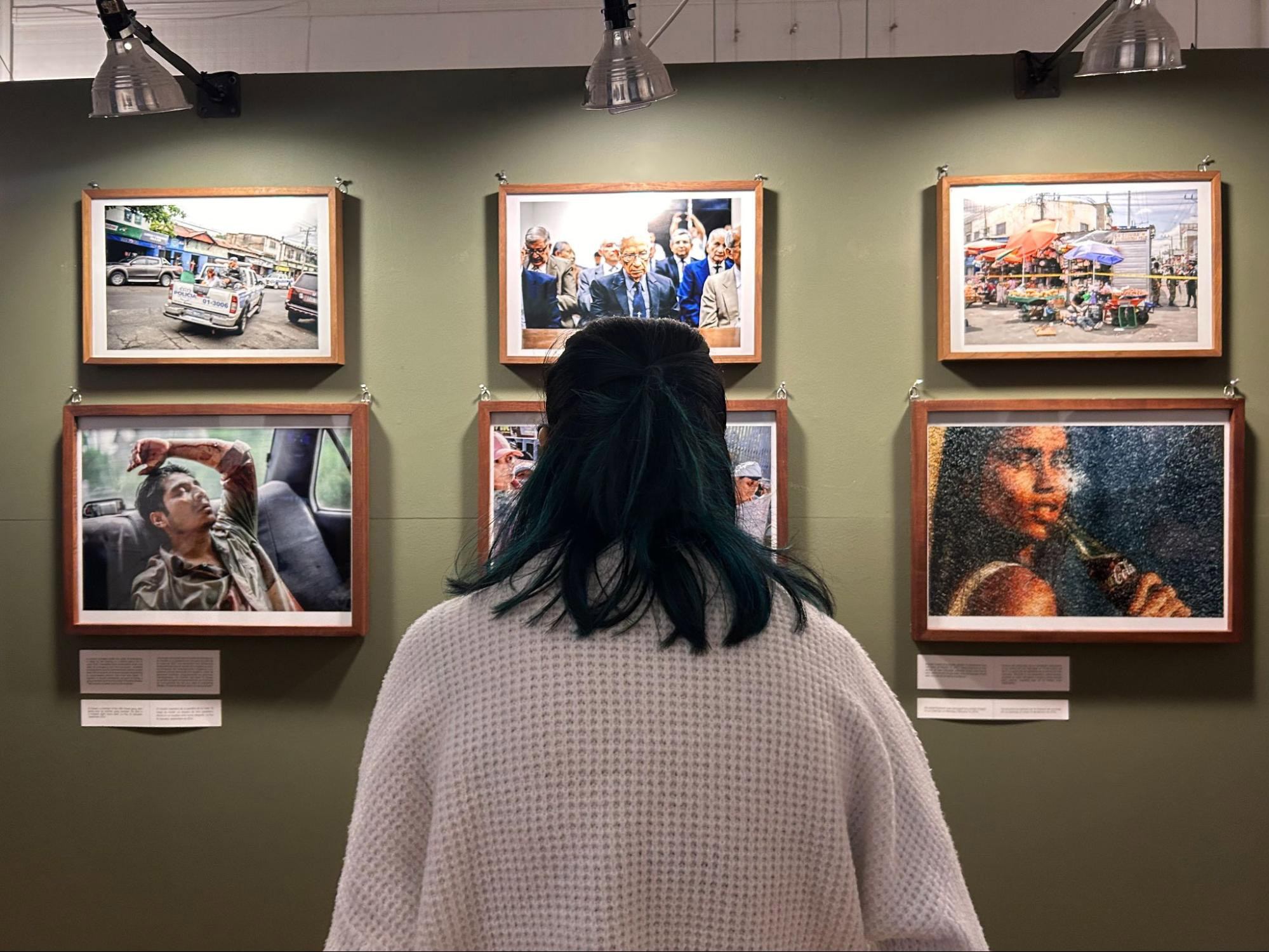U.S. foreign policy during the Cold War contributed to mass violence across Latin America, including El Salvador, Guatemala, Argentina, and Chile, a major factor in Latin American migration to the US during that period.
Part of that history is on display at the Bronx Documentary Center, where a photo exhibition titled “El Salvador: Legacy of Violence” opened in September. The exhibit strives to connect the history of the Cold War and the 12-year Salvadoran Civil War that came from it with the experience of Salvadorans today.
The exhibit features photos by award-winning American photojournalist Robert Nickelsberg – who documented the country’s civil war from 1981 to 1984 – and Salvadoran photographer Fred Ramos, whose pictures capture the modern-day impacts of violence.
“I think it’s easy to talk about violence in El Salvador, but it’s more complicated to talk about justice,” Ramos said, walking audiences through his work on the exhibit’s opening night.
Nickelsberg said over the phone after the opening that his photos provide the context necessary for understanding government policies.
“If you want to understand war and violence and conflict, you must understand the methods of peace. If you think you understand what peace is all about, the only way you’ll have a full understanding of it is if you understand war.”
The partnership between the photographers and the Bronx Documentary Center began with Nickelsberg reaching out to Michael Kamber, the Center’s founder and a former New York Times photographer, about hosting an exhibit in celebration of his new book, “Legacy of Lies, El Salvador 1981-1984,” which includes the photos on display now.
Hosting the exhibit here was important for Kamber and Nickelsberg because the Bronx is home to thousands of Salvadorans.
“This is a history that I think is probably not covered in the public schools,” Kamber said. “For young people, there’s actually quite a lot to be learned here.”
Cynthia Rivera, the Center’s exhibition manager, sees the gallery as a form of truth-telling to combat the demonization of migrants in the media.
“What we want to do with all of our shows is educating people on what’s going on in these specific countries that do relate back to our community and the people that live here,” said Rivera.
But the photos also cover a traumatic time for members of the community. The Bronx Documentary Center balances this, Rivera said, by focusing on art as a means of having conversations about difficult topics without sensationalism.
According to Maria De La Paz Galindo, BDC’s Community Engagement Manager, their thoughtfulness and outreach paid off on opening night.

“I spoke with many Salvadorans, people who came to see the show and actually who was, for the first time, here at BDC,” she said. One viewer told Galindo that, despite hearing their parents and grandparents talk about the violence, they didn’t know the history until today.
“Some of them said that it was heartbreaking.”
Maricelly Malave, co-executive director of political activism grassroots organization Demand Progress, attended the gallery opening. As a Puerto Rican woman, she said she knows firsthand that spaces that document violent history are necessary for cultural healing.
“When you migrate or you’re forcefully displaced,” Malave said, “the emotional processing events like these happen in community.”
At the gallery’s opening, Ramos reflected on his own history contending with political violence, saying he found his “own justice through the photography.”
“There are so many examples of violence in the world, but El Salvador is like a laboratory of violence,” Ramos added during a phone interview after the event. “We need leaders that really want to educate people, that really want to empower people.”
Carlos Guadron, a “Salvi,” or Salvadoran-American, from the Bronx and host of the Salvis Unidos podcast, said his community has a “culture of silence.
“Adults that lived through the Civil War, they couldn’t understand it, and now the children don’t know much about it or their experience becaue parents just don’t talk about it,” said Guadron. As a result, he said, Salvis don’t understand their identity. Exhibits like these are intended to change that.
The exhibit is open for viewing at the Bronx Documentary Center on Thursdays and Fridays from 3 p.m. to 7 p.m. and Saturdays and Sundays from 1 p.m. to 5 p.m. until Oct. 27. Admission is free and viewer discretion is advised as some photos have explicit imagery.

